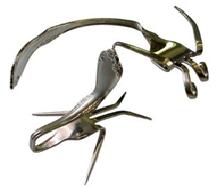M.3(1) – Leaning Tower of Pisa
This 25 cm high wooden “tower” shows the effects of changing an object’s center of mass. The “tower” is stable when the center of mass is above the base, ie, the “tower” without the top. When the top is in place, it tumbles over.

M.3(2) – Double Cone and Inclined Plane
A double cone apparently rolls uphill freely whereas a uniform cylinder rolls the other way. The demonstration emphasizes the apparent motion in contrast to that of the center of gravity of the cone.The inclined plane is formed by V-shaped wood bars, as in the figure. Place the cylinder at the top end of the inclined place. The cylinder naturally rolls downward. Now locate the double cone symmetrically at the bottom (narrow end) of the inclined plane. It rolls upward: as the wood bars diverge, the axis of the double cone is actually moving down.

M.3(3) – Center of Mass Apparatus
This apparatus consists of 2 different size balls connected by a bar. The bar can be made to spin smoothly about the apparatus’ center of mass but not about the apparatus’ geometrical center. The bar is about 20 cm long and the balls are 1 cm and approximately 2 cm in diameter.
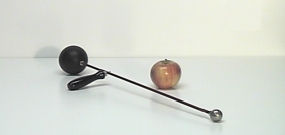
M.3(4) – Finding the Center of Gravity
The center of gravity of any body can be found by suspending it from one pivot point and then another, and another. The lines drawn along the string supporting a plumb will all cross at a common point, the center of gravity.
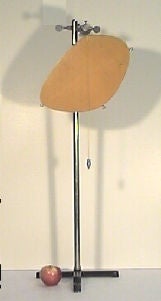
M.3(5) – Pendulum on the Cart
This demonstration shows that the center of mass remains at constant velocity.
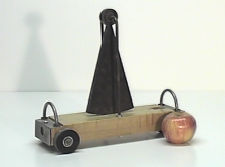
M.3(6) – Center of Gravity Paradox
This simple apparatus consists of a 1.2 m metal rod and a lead slide weight secured with a thumb screw. It is used to show that a position of higher center of gravity is easier to balance because the system is slower to react to unbalanced forces. First balance the rod with the load near the finger tip. It is clearly very difficult to do so. Now turn the rod over and balance it. With the center of gravity much higher it does not tip over so easily.
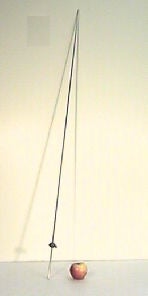
M.3(7) – The Feeble Minded Disc
The apparatus is an approximately 25 cm diameter hardwood disk. When it is placed on an inclined plane, it rolls up the plane! When it is placed on the lecture table it promptly rolls to the edge and stops! Its center of mass can be determined by suspending it successively by the holes located around its periphery. It shows that the the stable position of a body is that for which the center of mass is at the lowest possible elevation.
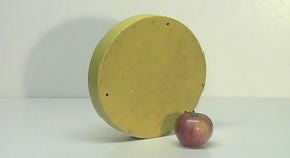
M.3(8) – The Plastic Bird
Use this small piece of plexiglass and a belt to do an interesting demonstration on center of mass. It shows that the stability of equilibrium of a hanging body depends on the position of the center of gravity with respect to the point of support.
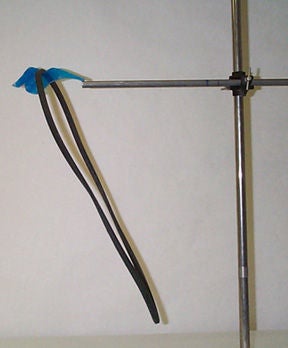
M.3(9) – Two-Circle Roller
Let two disks of same size intersects and has a diameter in common. Then if the distance of the two centers of disk is square root 2 times their radius, the distance from the center of gravity to floor is constant, thus the object rolls smoothly. This object is called the two-circle roller.
Click here to see a video of this demo.
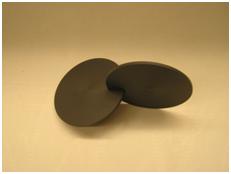
M.3(10) – Bottle Balancer
It is a fascinating conversation piece that illustrates the principle of center of gravity. A small hole in an oak board allows you to balance a 2-liter soda bottle at an angle that defies gravity.
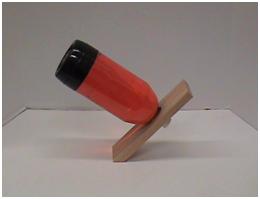
M.3(11) – Cyclist Riding on a Wire
This demonstration consists of a stuffed bear riding a bike along a wire. It stays on the wire as long as the center of mass is below the wire. If the weights are moved upwards, the bear will fall easily.

M.3(12) – Dragon Forks
One fork sits on the table, with the end of its handle pointing upwards. A sharpened tine from
the other fork balances on this handle, and the top fork can now be spun round and round. The
top fork has been shaped so that there are eyes and ears that look like a dragon. This exhibits
the principle of center of gravity.
